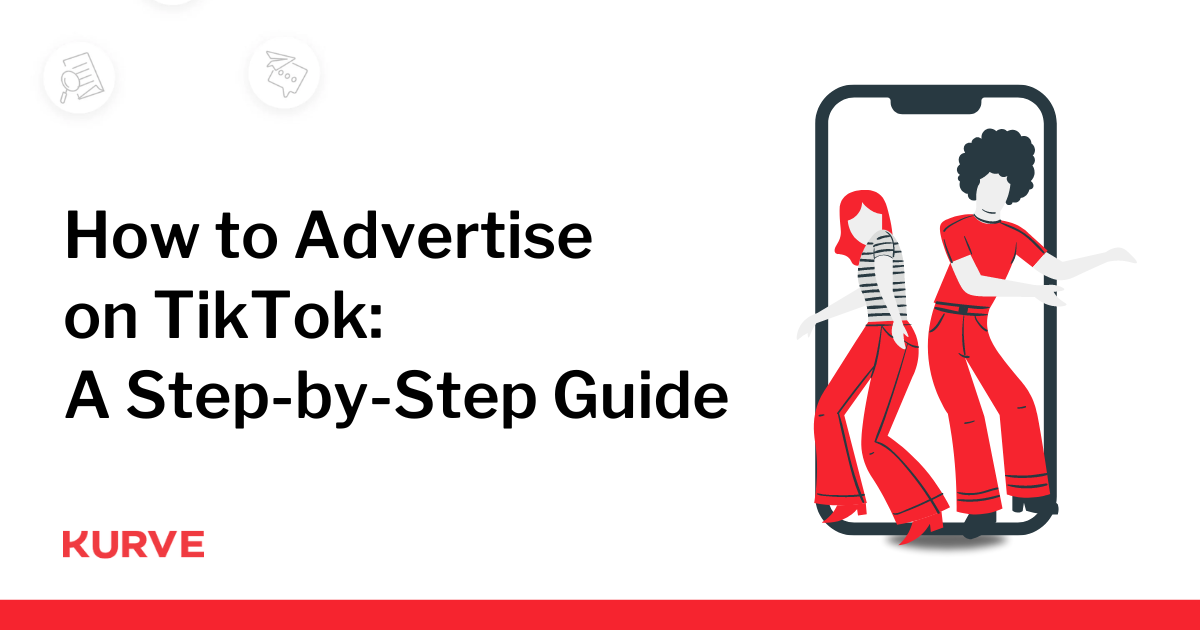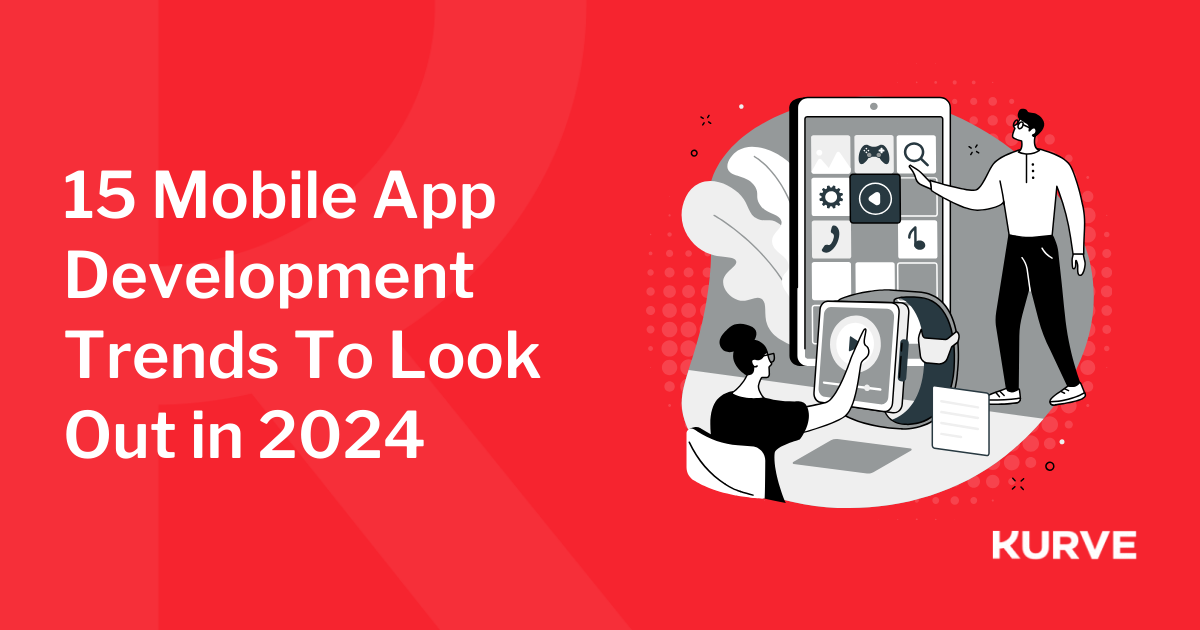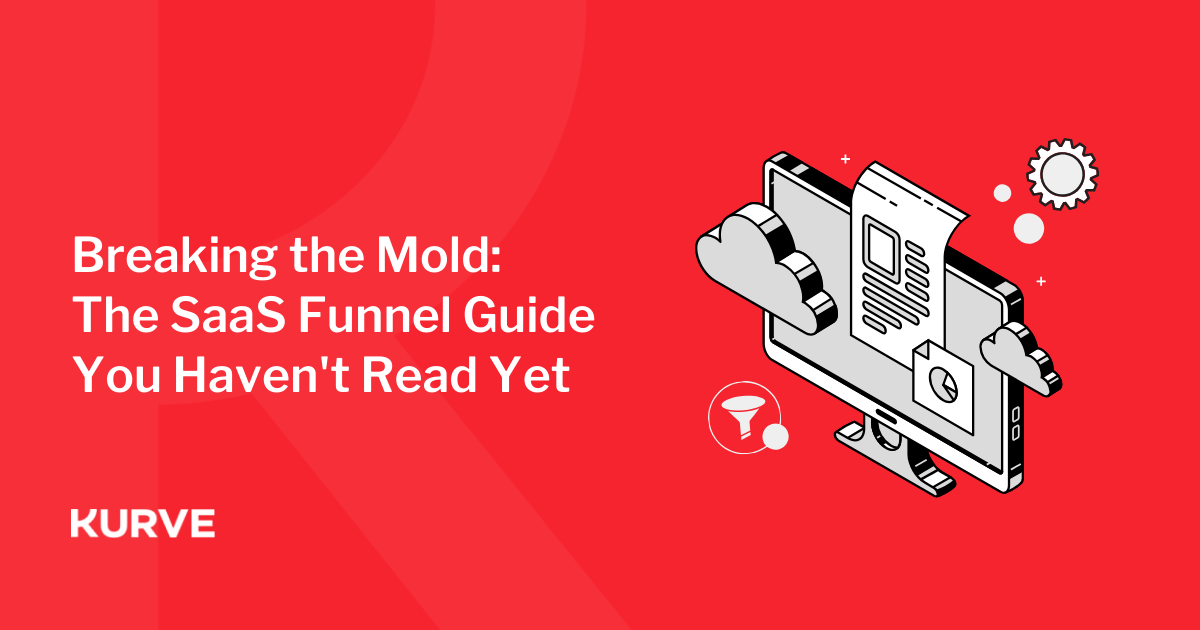A Quick Guide to Facebook Ads for eCommerce
Using Facebook Ads allows your eCommerce brand to create and publish targeted ads in minutes, reaching audiences who are a perfect fit for your products. You can build awareness for your brand, educate prospects, and drive acute need-state purchases on autopilot.
But, if you’re like most business owners, you might have tried Facebook Ads in the past without seeing the results that you hoped for.
In truth, seeing success with Facebook Ads is more complicated than it’s often made out to be. You need to approach your advertising campaigns like you would with any other marketing initiative: careful planning , plus a deep understanding of what makes your customers tick.
Luckily, there’s a process you can follow to see results.
This guide will walk you through the process of how to set up and run profitable Facebook Ad campaigns for your eCommerce brand.
In this article we’ll cover:
- How to understand your results on Facebook Advertising
- What types of campaigns eCommerce brands should run
- Best practice tips on managing your Facebook campaigns
Whether you’ve never tried Facebook Ads, or are simply looking for ways to optimise your existing campaigns, you’re bound to learn something here.
Don’t start without a way to measure results
Before you hit publish on your ad campaigns, you need to ensure you can measure the results.
If you can’t measure results, you’ll end up spending hundreds — possibly thousands — with no clear understanding of where your budget went.
To track campaigns effectively, first, you’ll need to install the Facebook Pixel on your website. From there, you can use Facebook Attribution to understand which of your ads are driving results. You’ll be able to see how each ad is performing, and if they’re driving the results you expect. If you don’t install the Pixel, you’ll be in the dark about actions your audience is taking.
You should also make sure you have attribution tracking on your website, to link your website activity back to your campaigns. Google Analytics offers several types of attribution model that will let you see results from your ad campaigns in conjunction with other marketing initiatives. For most companies, a Linear, Time-decay, or Position-based model will be effective — as you’ll be able to see how multiple channels affected each purchase.
Ultimately, the attribution model you choose won’t “make or break” a campaign, but it’s important to understand attribution to ensure you know why you’re seeing the results you are.
Three types of Facebook Ad campaigns eCommerce brands should use
1. Top-of-funnel, awareness focused
There are three main types of campaigns you need to be successful with eCommerce Facebook Ads: top-of-funnel, middle-of-funnel, and bottom-of-funnel.
Your top-of-funnel (ToF) campaign is designed to generate initial awareness for your brand and products. At this stage, we want to attract new audiences who don't know us yet and haven't made up their mind about our brand.
When creating your ads, you should focus on the unique benefits you offer. Include enough information in your ads to make it clear what you do to a completely cold audience, but don’t try to pitch them on your products just yet.
Here are some key action points for this campaign:
Test a variety of audiences: Target based on lookalikes, interest, and demographics. You can use the ‘Audience Overlap’ feature in Facebook to ensure your ads aren’t competing against each other and have the best chance to be shown.
Exclude audiences already being targeted: As you run bottom and middle-of-funnel campaigns (we’ll look more at these below) at the same time, you need to ensure those audiences are excluded — otherwise, you won’t know if cold campaigns are converting.
Experiment with messaging: Try different variations on your messaging, value propositions, and ad creatives to discover what resonates with your audiences.
Optimise your budget: Use campaign budget optimization to allow Facebook to find the best-performing audiences and creatives and optimise your budget accordingly.
Allocating spend: Your ToF campaigns should use about 70% of your overall budget, helping drive qualified buyers through your funnel. And 20% of this should be allocated to testing new audiences and creatives.
The key thing to remember at this stage is your audience don’t know your brand, so you need to earn their attention. So, make sure your campaigns tap into your audience’s real pain points, beliefs, personalities, interests, and demographics.
Depending on how much you already know about your audience, it can take time to get your ad targeting and messaging to resonate. If you’re launching something new, you’ll have less info to work with than established competitors. So you’ll need to learn quick. The only way to learn is by testing audiences, creatives, and messaging, then looking at your data to see what resonates.
2. Middle-of-funnel, consideration stage
In the middle-of-funnel (MoF), also referred to as the “consideration stage”, your goal is to educate the prospects who are already familiar with your brand.
These buyers are actively considering buying, but will still be considering all the alternatives (or may not be convinced they need to buy anything at all). At this stage, your main goal should be to instil confidence in buyers, and build a strong relationship with them.
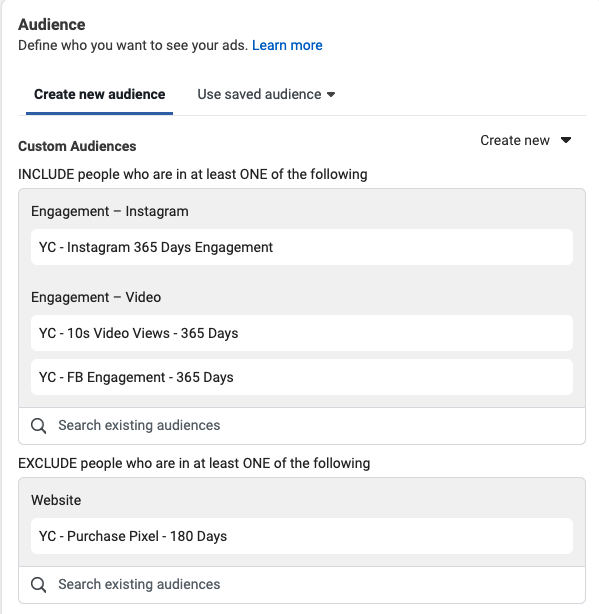
This is a screenshot from one of the accounts I'm managing. This particular business is still very new and in its infancy, so audience size is limited.
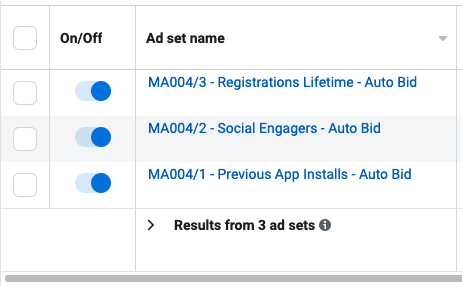
This is an example of a MoF campaign with three different ad sets targeting slightly different audiences.
Here are some key steps to take with your ads at this stage:
Use direct calls to action: You could be asking for email addresses in exchange for something of value (e.g. a discount code, eBook, free trial, or similar) so you can continue to connect with warm prospects over email.
Exclude your bottom-of-funnel audiences: It’s likely you’ll already have BoF audiences’ contact details and know what they care about, so make sure to exclude them in order to save budget and avoid showing repetitive ads to them.
Divide audiences by actions: Target your campaigns based on actions such as: website visitors in the last 180 days, social media engagement in the last 180 days, active or inactive email subscribers, video views in the last 180 days.
Make your creatives specific and relevant: During the consideration stage, someone already knows the basic background of what you offer, so focus more on unique features, use cases, details, or value propositions that make your brand the best option.
Avoid audience fatigue: Your audiences will already be familiar with your ads and messages, so it’s important to rotate the content they see. If not, you’ll create audience fatigue, and your ads won’t see the engagement you expected.
Setting your budget: You should allocate approximately 15% of your overall budget to your MoF campaigns. Typically only 15%, because it’s a limited audience containing a mix of people who need more education, plus those who don’t aren’t interested at all.
Note: this budget distribution changes when you have a new product launch, or it’s Black Friday, Christmas, or if other big selling events occur. As I explain in my Black Friday Facebook Ads Strategy article, these are times when you should be weighing more budget (circa 70%) towards MoF, rather than targeting cold audiences.
The key thing to remember at this MoF stage is that your Facebook Ads should be designed to help educate your audience on why they should choose you. Focus on educational content, adding social proof, and PR pieces that highlight your brand in a great light.
3. Bottom-of-funnel, conversion focused
Finally, it’s time to turn your audience into paying customers. You’ll do that with bottom-of-funnel (BoF) campaigns focused on conversions. These should typically use around 15% of your overall Facebook advertising budget (alongside 70% ToF and 15% MoF).
The audience you’ll be targeting have shown high intent to buy through actions such as:
- Visiting product pages on your website
- Handed you their email address in exchange for content or discount codes
- Added items to cart but not checked out
These people already know your brand, they know what type of products you sell, and what they can expect to pay. You just need to help them make that final step to purchase.
A couple of ideas for your BoF campaigns will be to:
- Highlight social proof really clearly
- Create fear-of-missing-out with time-based promotions
- Remind people of the unmissable benefits of what they’re interested in
There are several key steps to creating high-converting BoF Facebook ad campaigns:
Only target buyers with high intent activity: Target a narrow audience based on signals such as: visited a product page within the last 14 days, added an item to cart in the last 14 days, or engaged with a certain number of other content types.
Optimise your campaigns for conversions: Make sure every ad in your BoF campaign has a clear call-to-action (CTA) related to purchasing the product, making it super easy to go to your site and complete the checkout.
Create urgency in your messaging and creatives: Using urgency in your messaging and creatives will help move people towards a purchase. This could include limited-time discount codes, highlight the risks of products selling out, or anything else that will help someone move quickly.
Use sequential retargeting: Sequential retargeting lets you target ads in a set order. Send buyers different messaging on days 1-4, 5-8, 9-14 to highlight different benefits of purchasing and learn what buyers care about.
Exclude anyone who has already purchased: Create a new audience from people that purchase, and exclude them from your BoF campaigns. If not, you’ll be spending money targeting people who have already purchased.
Your BoF campaigns will be the most profitable, and it’s not uncommon to see a Return on Ad Spend (ROAS) of 8x to 30x, depending on your product of course.
With such a high ROAS being so high, it’s often tempting to turn off your other campaigns at this stage. But, remember: you’ll only see those numbers if your ToF and MoF campaigns are working as planned to nurture your audience. The key is that your buyers are supported through the buying journey, making it an easy decision by the time they’re ready to purchase.
Summary: Facebook Ads for eCommerce
Facebook Advertising lets you reach qualified buyers with relevant and compelling content, at the right time. If managed with care, you can generate predictable interest and purchases.
But you can’t just run ads to any audience and expect decent results in return.
Follow these best practices around campaign structure and tactics, and you’ll be using a proven approach for attracting, nurturing, and converting prospects through Facebook Ads. Start by targeting top-of-funnel audiences to build awareness, and move them through the buyer journey, ending with conversion-focused, bottom-of-funnel ads — ones which drive purchases.
You’ll quickly see results and be able to double-down on what works, and then scale up quickly.
This article is by Kurve's Luke Nevill, a performance marketer specialising in social advertising.
Luke Nevill is a performance marketer, specialising in social advertising. At Kurve, he uses a proven framework for running marketing experiments at scale to drive quick results. If you’re looking for help optimising your Facebook ads strategy, get in touch today.
